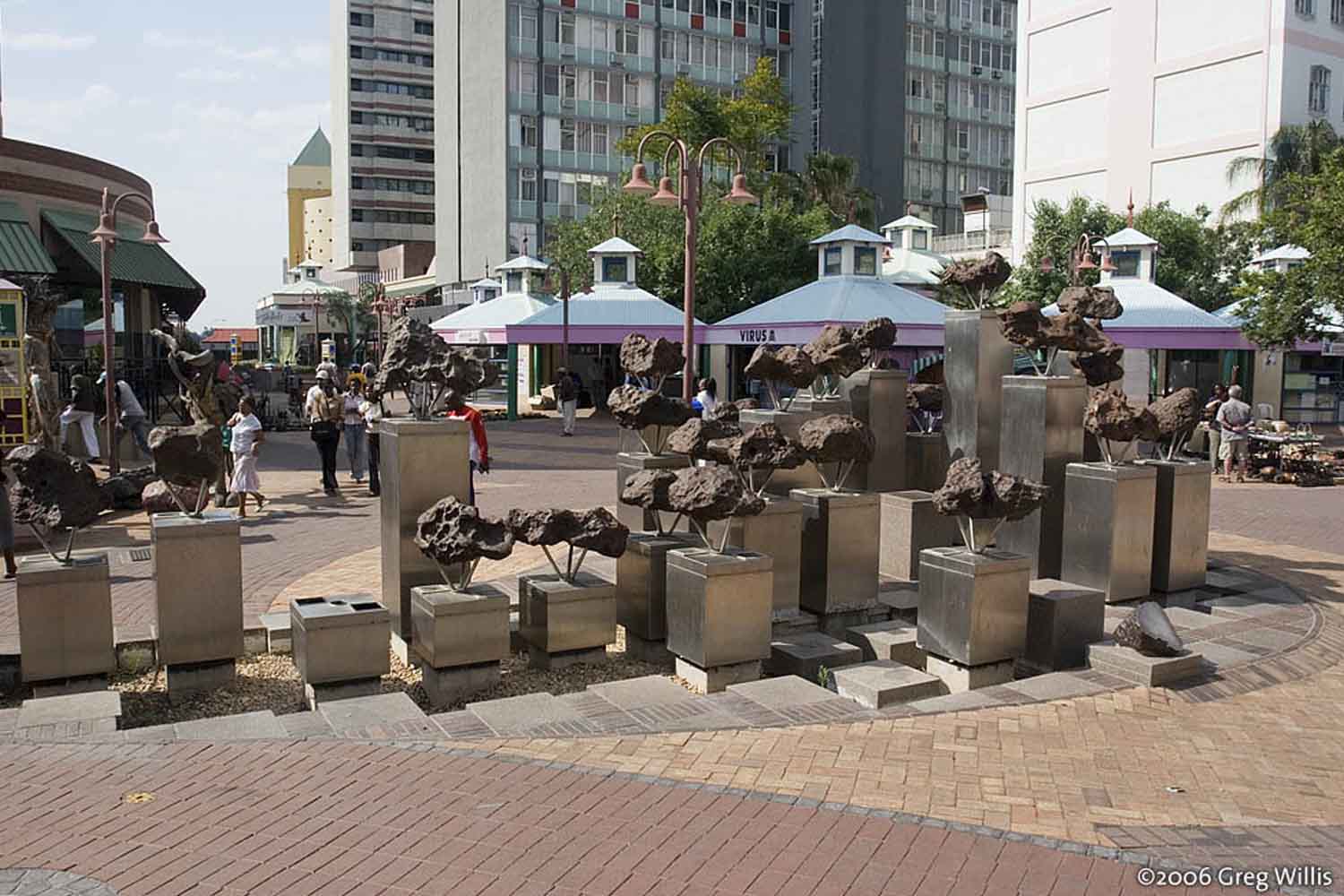In the heart of Windhoek, Namibia, fragments of the 4-billion-year-old Gibeon meteorite are embedded in a public fountain, inviting passersby to touch a piece of the universe.

@Wikimedia Commons
Have you ever wandered through a city and stumbled upon something so otherworldly, so impossibly out of place, that it seems to have landed there from another planet? In Windhoek, Namibia’s capital, that moment doesn’t just happen—it’s built into the landscape. In the middle of Post Street Mall, surrounded by shops, pedestrians, and the humdrum of daily life, stands a public sculpture that’s not just a fountain—it’s a window into the cosmos.
Embedded within its unassuming structure are 31 genuine fragments of the Gibeon meteorite. Yes, real pieces of space rock, which fell to Earth around 30,000 years ago and are estimated to be at least 4 billion years old. That’s right—these fragments were already drifting through space when our solar system was still in diapers.
The gibeon meteorite fragments
The Gibeon meteorite is more than one of the largest iron meteorites ever discovered. It’s a celestial fossil, composed of 91% iron and 7.5% nickel, laced with intricate internal patterns known as the Widmanstätten structure—a crystalline design that forms only in the vacuum of space, under conditions that can’t be replicated on Earth.
Although a European missionary formally documented the meteorite in 1836, the local Nama people had long been aware of its existence, using the metallic fragments to craft tools and arrowheads. Today, these same ancient shards of the universe are displayed on metal pedestals in Windhoek’s city center, completely exposed to the elements—and to human curiosity.
Anyone can stop, look, and touch. No ticket required. No glass case in the way. Just you and the stars, separated by four billion years of history and a few inches of air.
Touching the universe while sipping your water
There’s a quiet poetry to this fountain. It doesn’t shout for attention. You might pass it by while looking for shade or somewhere to rest. But pause for a second, and you’re face to face with something that predates Earth’s very first animals.
Think about it: by the time the first hominids set foot on Earth, these fragments had already been sailing through the void for eons. To touch one is to reach across the ages, like shaking hands with the universe itself. Time folds in on itself. You are here, it is there, and somehow, for a breath, you meet.
Of course, not all stories have clean edges. Over the years, some of the meteorite fragments have been stolen—a blow not just to the local community but to science itself. And yet, the city has resisted the impulse to lock everything behind museum doors. The vision remains bold: keep it open, public, and alive.
This is not just a display; it’s a conversation between science and art, between cosmic history and everyday life. It invites not just admiration, but interaction. The beauty of it is in its vulnerability, its willingness to be touched, questioned, and even misunderstood by those passing by.
After all, isn’t that what the universe has always done—revealed itself not through lectures and labels, but through moments of quiet awe?
Fonte: Windhoek
